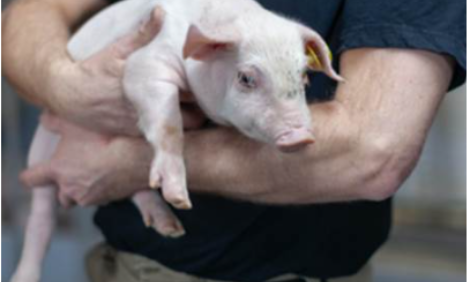



Methods of AI delivery
By Dr Grant Walling, JSR Genetics - In the search to increase productivity for pig producers, various insemination technologies have been developed to improve fertility on farm.The two main methods available for artificial insemination both utilise catheters allowing (1) cervical (more common) and (2) post-cervical inseminations. With cervical insemination the catheter is locked in the cervix when the sow/gilt is on heat and the semen will be drawn as the uterine horns start contracting. Those catheters will be familiar to most producers and are relatively easy to use.
The other main type of catheter that has appeared allows for semen deposition in the uterine body of the sow (post-cervical insemination). The catheters used for post-cervical insemination are more expensive and have an extension that passes the cervix (see picture). The post-cervical catheter is similar to the cervical catheter but contains a thinner extension tube. These catheters require a different insemination technique and the training of stockmen prior to their use is essential. The risk of cervical bleeding and tissue damage is high if staff are not properly trained. Poor practice would therefore increase the risk of infection for sows.
 From: D Lewis et al, 2002 (Female genital tract with catheter allowing deep insemination) |
If numbers of spermatozoa are reduced it is imperative that the quality of the semen is at an optimum. Studies have reported that as little as 1.5 billion live spermatozoa using post-cervical insemination gave similar farrowing rates and litter sizes to cervical insemination using 2.5-3 billion spermatozoa. The total volume in liquid terms of the insemination should however not be reduced when inseminating into the uterine body. A minimum volume is required for appropriate delivery of the spermatozoa into the two uterine horns.
Based on current economics there are presently only limited commercial advantages to switching from cervical to post-cervical insemination. The potential economic return of having fewer spermatozoa in the insemination dose is currently marginal when considering the risks of loss of fertility due to inadequate staff training or small fluctuations in semen quality. Future technical developments in relation to deep intra-uterine catheters which allow insemination of a few hundred spermatozoa directly in the uterine horns should offer far greater benefits for breeding companies and pig producers alike.

References
D lewis et al (2002). Use of Intra-Uterine Insemination of Pigs: Pros, Cons & Economics
November 2006








